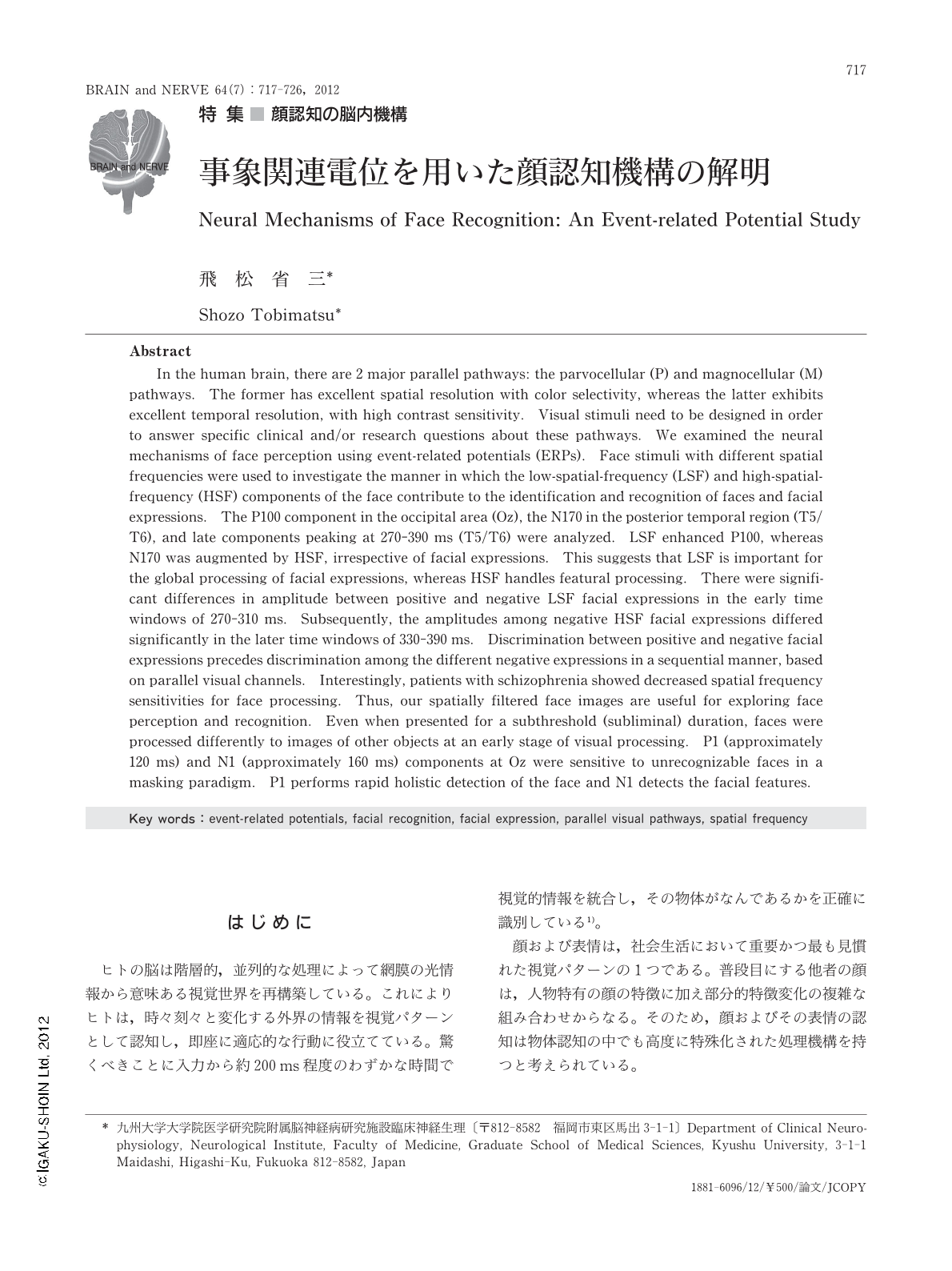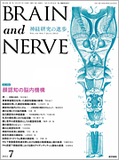Japanese
English
- 有料閲覧
- Abstract 文献概要
- 1ページ目 Look Inside
- 参考文献 Reference
はじめに
ヒトの脳は階層的,並列的な処理によって網膜の光情報から意味ある視覚世界を再構築している。これによりヒトは,時々刻々と変化する外界の情報を視覚パターンとして認知し,即座に適応的な行動に役立てている。驚くべきことに入力から約200ms程度のわずかな時間で視覚的情報を統合し,その物体がなんであるかを正確に識別している1)。
顔および表情は,社会生活において重要かつ最も見慣れた視覚パターンの1つである。普段目にする他者の顔は,人物特有の顔の特徴に加え部分的特徴変化の複雑な組み合わせからなる。そのため,顔およびその表情の認知は物体認知の中でも高度に特殊化された処理機構を持つと考えられている。
本稿では,主に並列的視覚情報処理の観点から顔や表情認知の基盤となる脳内メカニズムについての知見を,時間分解能に優れる事象関連電位(event-related potential:ERP)を中心として紹介し,顔認知をめぐる最近の研究動向を概観する。顔および表情認知の脳内メカニズムについてはここ数年の総説を参考にしていただきたい2-8)。
Abstract
In the human brain,there are 2 major parallel pathways: the parvocellular (P) and magnocellular (M) pathways. The former has excellent spatial resolution with color selectivity,whereas the latter exhibits excellent temporal resolution,with high contrast sensitivity. Visual stimuli need to be designed in order to answer specific clinical and/or research questions about these pathways. We examined the neural mechanisms of face perception using event-related potentials (ERPs). Face stimuli with different spatial frequencies were used to investigate the manner in which the low-spatial-frequency (LSF) and high-spatial-frequency (HSF) components of the face contribute to the identification and recognition of faces and facial expressions. The P100 component in the occipital area (Oz),the N170 in the posterior temporal region (T5/T6),and late components peaking at 270-390 ms (T5/T6) were analyzed. LSF enhanced P100,whereas N170 was augmented by HSF,irrespective of facial expressions. This suggests that LSF is important for the global processing of facial expressions,whereas HSF handles featural processing. There were significant differences in amplitude between positive and negative LSF facial expressions in the early time windows of 270-310 ms. Subsequently,the amplitudes among negative HSF facial expressions differed significantly in the later time windows of 330-390 ms. Discrimination between positive and negative facial expressions precedes discrimination among the different negative expressions in a sequential manner,based on parallel visual channels. Interestingly,patients with schizophrenia showed decreased spatial frequency sensitivities for face processing. Thus,our spatially filtered face images are useful for exploring face perception and recognition. Even when presented for a subthreshold (subliminal) duration,faces were processed differently to images of other objects at an early stage of visual processing. P1 (approximately 120 ms) and N1 (approximately 160 ms) components at Oz were sensitive to unrecognizable faces in a masking paradigm. P1 performs rapid holistic detection of the face and N1 detects the facial features.

Copyright © 2012, Igaku-Shoin Ltd. All rights reserved.


